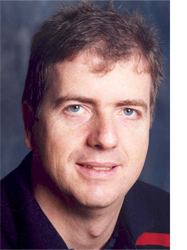Institutions Jacobs University Residence Bremen, Germany | Name Ulrich Kortz | |
 | ||
Known for structural inorganic chemistry, polyoxometalate chemistry | ||
Doctoral advisor Michael Thor Pope | ||
Graduation 2019 - HONORARY DOCTORATE
Ulrich Kortz is a German chemist and professor, working in the area of polyoxometalate chemistry.
Contents

Biography
Kortz studied Chemistry and Chemical Engineering in Giessen and Darmstadt from 1982 until 1989, and got his doctorate at Georgetown University in Washington, DC, under the supervision of Michael T. Pope, in 1995. In 1996 at Georgetown University, he received the Harold N. Glassman dissertation award for distinction in research. He spent his postdoctoral years with Dante Gatteschi at Florence University, Italy, from 1995 to 1996, and with Andre Tézé and Gilbert Hervé at Versailles University, France, from 1996 to 1997. In 1997 he was hired as assistant professor at the American University of Beirut in Lebanon, and he was promoted to associate professor in 2001. In 2002 he returned to Germany to join the newly established International University Bremen, now Jacobs University Bremen, as associate professor and he was promoted to full professor in 2007.
Highlights
Kortz and coworkers pioneered the class of noble-metalates in particular polyoxo-palladates and -aurates, such compounds open new directions for synthetic, structural, and applied chemistry in polyoxometalates. This work first led to the discovery of a {Pd13} heteropolyoxopalladate nanocube. A few years later, continued development allowed for the synthesis of a novel, discrete noble metal-oxide, containing 22 palladium atoms, as well as two central copper ions. In 2010, the gold-based polyoxometalete {Au4} was reported, and featured on the inside front cover of Angew. Chem. Int. Ed. 10/2010.
Kortz and his team successfully created a novel large polyoxometalate with 100 tungsten and 20 cerium atoms that has a molar mass of about 30 kilo Dalton. With a maximum diameter of 4.2 nm the inorganic molecule is comparable in size to large complex bio-molecules or even small viruses. The Kortz group has also pioneered the reactivity of the P8W48 template wheel towards 3d transition metal ions leading to the {Cu20}-tungstophosphate. Another highlight is the {Mn19}-containing 60-tungsto-6-silicate, comprising a planar core of 19 Mn2+ ions.
